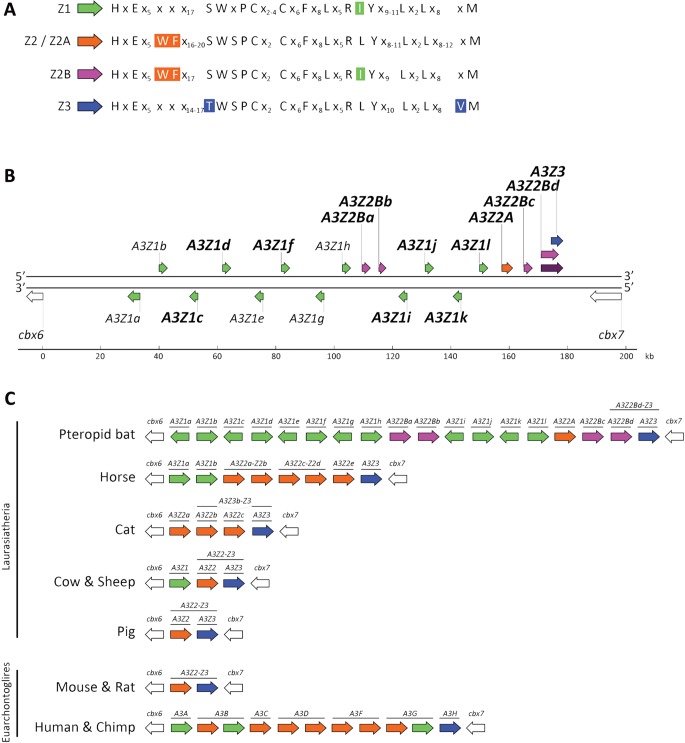Fig. 1.
The pteropid bat A3 gene locus reveals the largest and most diverse known repertoire of A3 genes in mammals. (A) The amino acid sequences of the four Z-domain subtypes are depicted from the first to the last invariant amino acid residue. Invariant amino acid residues are represented by their letter, “x” indicates positions of variable amino acid identity, and numbers indicate the length of the variable amino acid sequence. For each subtype, the defining residue(s) are colored. (B) The A3 gene locus of Pteropus alecto is shown to scale. A3Z1, A3Z2A, A3Z2B, and A3Z3 gene coding regions are shown in green, orange, pink, and blue, respectively. The region encoding the A3Z2Bd-Z3 double-domain gene product is shown in maroon. A3 genes verified as being transcriptionally active are denoted in bold type. The CBX6 and CBX7 genes immediately upstream and downstream of the locus are shown in white. (C) Graphical schematic diagrams of sequenced mammalian A3 loci are depicted bound by the CBX6 and CBX7 genes, shown in white, positioned immediately upstream and downstream of the A3 genes.

